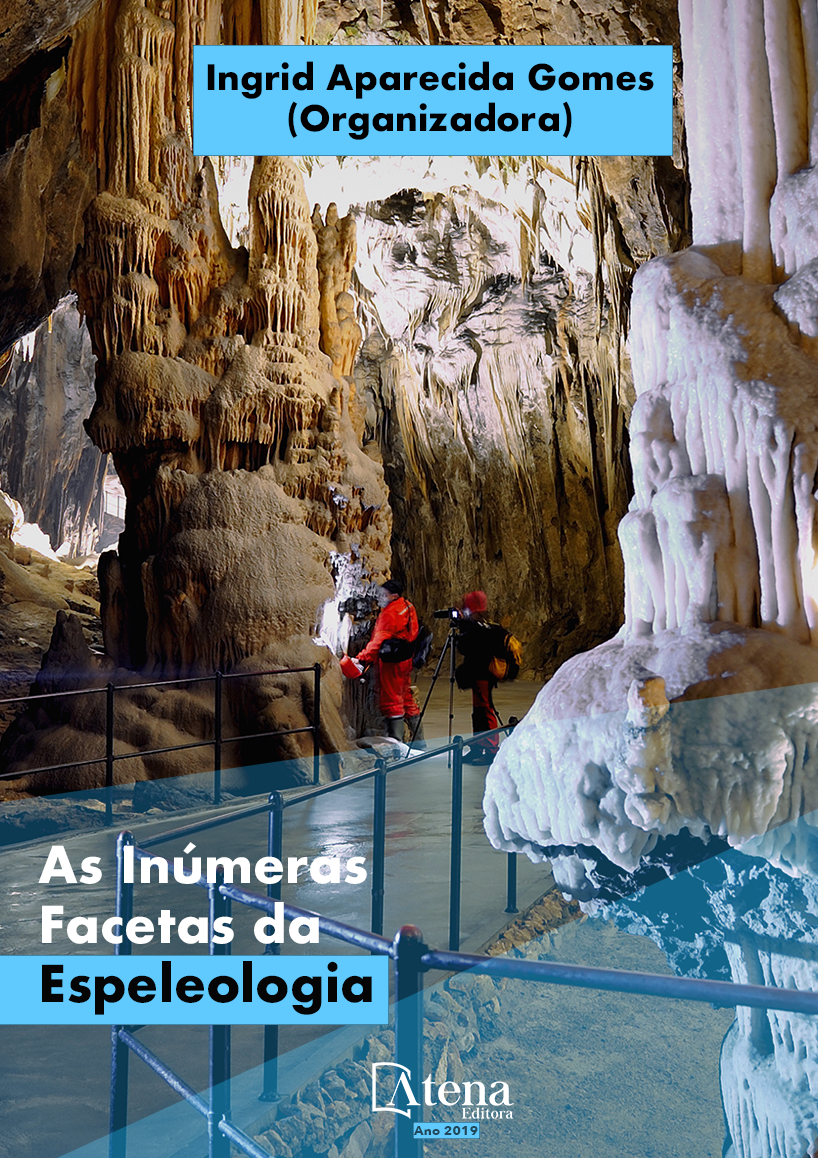
ACHADO DE FERRAMENTA LÍTICA PLANO CONVEXO NO INTERIOR DA CAVERNA TOCA DA ONÇA DA CAPITINGA, FORMOSA-GOIÁS
As ocupações humanas pretéritas
são bastante conhecidas e estudadas no
Planalto Central Brasileiro, no entanto os estudos
de arqueologia em cavernas ainda são pouco
frequentes, principalmente no estado de Goiás,
diferentemente de outros estados do sudeste
e nordeste brasileiro, e que apresenta alto
potencial para a arqueologia e espeleologia. As
cavernas foram com certeza alvos de ocupações
humanas, permanentes e ou temporárias para
diversos fins, de habitacionais a simbólicos e
religiosos. Na Toca da Onça da Capitinga em
Formosa no estado de Goiás (SBE GO-057),
foram registradas representações rupestres em
pinturas e uma ferramenta lítica em sílex do tipo
plano convexa, conhecida como raspador, de
uma das tradições mais antigas que ocuparam
o Planalto Central. Este recorte evidência a
importância de otimizar estudos e análises de
atividades e relações humanas e as interações
com cavernas, onde estas podem ter sido
espaços escolhidos para os diversos usos
desde busca de recursos matérias, faunísticos,
abrigos e espaços simbólicos.
ACHADO DE FERRAMENTA LÍTICA PLANO CONVEXO NO INTERIOR DA CAVERNA TOCA DA ONÇA DA CAPITINGA, FORMOSA-GOIÁS
-
DOI: 10.22533/at.ed.8101930011
-
Palavras-chave: artefato lítico, pré-história, cavidade.
-
Keywords: lithic artifact, prehistory, cavity.
-
Abstract:
The previous human occupations are well
known and studied in the Brazilian Central
Plateau, however, cave archeology studies
are still infrequent, especially in the state of
Goiás, unlike other states in the southeastern
and northeastern Brazilian states and which
presents high potential for archeology and
caving. The caves were certainly targets of
human occupations, permanent and temporary
for various housing purposes, symbolic and
religious. In the Lair of the Jaguar the Capitinga
cave in Formosa at the state of Goiás (SBE
GO-057), rock representations were recorded
in paintings and a lytic tool in flint of the convex
plane type, known as scraper, of one of the
oldest traditions that occupied the Central
Plateau. This clipping evidences the importance
of optimizing studies and analyzes of human
activities and relationships and the interactions
with caves, where they may have been spaces
chosen for the various uses from the search of material resources, fauna, shelters and symbolic spaces.
-
Número de páginas: 15
- Alfredo Palau Peña


